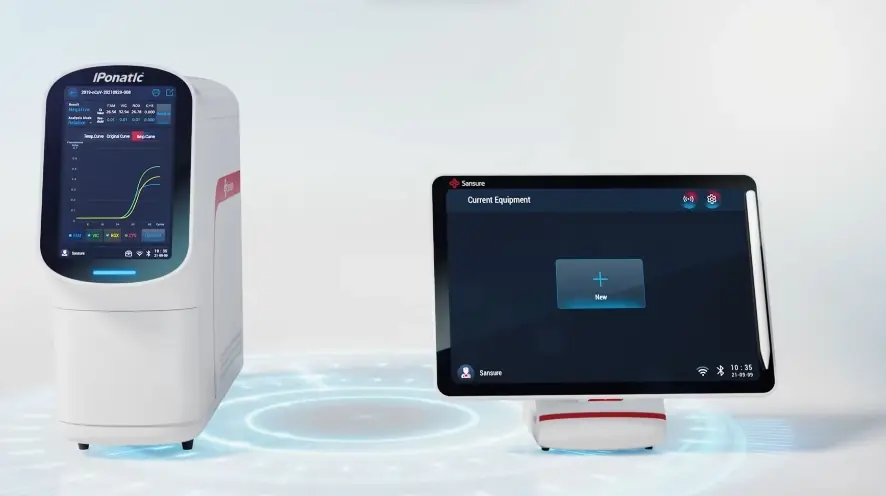Imagine your product truly understood? That's the potential I see when we empower customers to visualize its core impact, not just read about it. Showing complex ideas or physical interactions needs a level of visual fidelity text simply can't match.
This is where exploring potent 3D product video animation examples becomes so valuable. They help bridge the gap, making features feel tangible and outcomes immediately clear for your audience, accelerating their path to discovery.
It’s crucial to plan ahead when it comes to high-quality video production. Discuss with our team, how you can get visual style, budget, timeline in sync.
Jai Ghosh
Video Producer at Advids
Let's talk

What is 3D product visualization and how can it benefit my project?
3D product visualization creates photorealistic digital images or animations using 3D software, showcasing products accurately from any angle without physical prototypes. It offers significant cost and time savings compared to traditional photography, aiding project reviews and marketing asset creation with flexible, detailed visuals.
How does 3D product visualization benefit businesses?
3D product visualization benefits businesses by accelerating time-to-market and reducing photography costs. Enhanced visuals increase customer engagement and conversion rates. It allows showcasing endless product variations easily and provides a consistent, professional brand image across channels.
What are the benefits of using 3D visualization for furniture e-commerce?
For furniture e-commerce, 3D visualization helps customers visualize items in settings and customize finishes instantly. It provides accurate size representation, potentially reducing returns. Visual catalogs can be created without physical inventory, and interactive 360/AR features boost engagement.
What are the benefits of using Animated Product Demo Videos?
Animated product demo videos effectively explain internal workings and demonstrate usage step-by-step. Animation simplifies complex products, capturing attention for better understanding. They offer flexibility for showcasing products in ideal environments and typically have higher viewer retention and shareability.
What is a 3D product demo video?
A 3D product demo video is an animation using 3D graphics to visually showcase a product's features and function. Its purpose is to demonstrate how the product works or is used in an engaging way. Created from 3D models, these videos allow for highlighting components and scenarios for marketing and sales.
How can 3D rendering and 3D visualization help businesses showcase their products?
3D rendering and visualization help businesses showcase products by creating photorealistic images and videos before manufacturing. They allow displaying products in ideal settings and showcasing numerous variations easily. Features like exploded views reveal internal details, providing versatile marketing assets from a single source.
How does 3D product rendering process work?
The 3D product rendering process starts with creating a 3D model of the product. Texturing and materials are then applied to define surface properties. Lighting is set up to simulate realism, followed by defining camera angles. Finally, the software renders these elements to produce the final image or video frames.
What are the benefits of using photorealistic product rendering in marketing?
Photorealistic rendering benefits marketing by creating highly realistic visuals indistinguishable from photos, building consumer trust. It allows showcasing products in aspirational contexts difficult for photography. Provides consistent, high-quality imagery for branding, enables cost-effective variations, and improves engagement in digital campaigns.
What is 360 product rendering?
360 product rendering generates visuals showing a product rotating a full 360 degrees, created by rendering the 3D model from multiple angles. It allows online shoppers to interactively examine products from every side, providing comprehensive detail. This improves customer confidence and understanding, boosting sales and reducing returns.
What is product animation and why is it important?
Product animation uses animated visuals to show products in motion or how they work. It is important because it captures attention and explains complex features dynamically. Animation highlights key selling points, showcases internal parts, and illustrates use cases more effectively than static media, leading to greater engagement and understanding.
Benefits of 3D Product Visualization
Building on the foundation of compelling visuals, embracing strategic approaches to 3D product video animation unlocks tangible business advantages. Beyond simply showing a product, these animations become powerful tools for guiding viewer action and demonstrating clear value. They provide a dynamic way to showcase offerings, allowing potential customers to see how solutions integrate into real-world scenarios and address specific needs. This is particularly powerful for a 3d electronic product video, where intricate features or software interfaces can be demonstrated with crystal clarity, enhancing understanding and highlighting practical benefits in context.
Measuring the impact of these visual assets moves beyond basic view counts. Businesses track the return on investment by comparing production costs against gains like increased qualified leads or a shorter sales cycle. Analyzing viewer behavior offers critical insights. Observing how people interact with the animation reveals which parts resonate most and where interest might wane, providing valuable data for refinement.
Implementing these strategies transforms high-quality visualization into a results-driven marketing force.
Technical Product Animation Explained
Moving beyond the foundational aspects of visual fidelity, technical product animation focuses on strategic execution and measurable impact . Crafting effective 3D product videos involves deliberate choices aimed at guiding viewer action and proving value. This includes implementing clear calls to action, shifting from generic prompts to specific instructions like " Request a Demo " or "Start Your Free Trial," directly relevant to the video's purpose and the viewer's journey.
Evaluating the success of these animations requires tracking tangible results. Measuring the ROI involves comparing production costs against the value generated, such as increases in qualified leads, a reduction in the sales cycle length due to prospective customers being better informed, or a decrease in support inquiries because features were clearly explained. Whether developing a 3d industrial product video to showcase complex machinery or a 3d medical product video demonstrating device functionality, understanding the return on investment is paramount.
Presenting products within real-world scenarios significantly enhances viewer connection and belief. Showing how a product integrates into existing workflows or effectively solves problems specific to a user's industry or daily tasks elevates its perceived value beyond just a list of features. This contextual demonstration makes the virtual offering feel more tangible and necessary.
- Analyzing viewer behavior offers deep insights. Using tools like heatmaps and attention tracking integrated into video players reveals which specific parts viewers watch closely, rewatch, or skip, helping pinpoint confusing sections or areas where interest wanes.
- Incorporating social proof builds credibility quickly. Including brief visuals of well-known company logos that utilize the product or mentioning statistics about satisfied users can significantly increase trust among potential customers.
- A/B testing different elements provides valuable data for optimization. Experimenting with thumbnail images, the initial seconds of content, the positioning or wording of calls to action, or even minor script variations can uncover what resonates most powerfully with the target audience.
- optimizing videos for distinct platforms is essential. Content created for social media feeds must immediately capture attention and function effectively without sound, often requiring text overlays and shorter durations, while videos on a dedicated product page can assume higher viewer intent, allowing for greater length and detail.
These technical considerations ensure animations not only look good but actively contribute to achieving business objectives.
Explaining Product Function Through Animation
Moving beyond simply showing how a product operates, leveraging the full potential of 3d product animation involves strategic planning focused on viewer action and measurable outcomes . It is not enough to reveal internal workings; creators must guide viewers toward the next step. This requires incorporating clear, compelling calls to action. Generic prompts yield little; specific instructions like "Request a Demo" or "Start Your Free Trial" linked to the viewer's journey stage drive meaningful engagement.
Evaluating success extends past view counts. Measuring the return on investment for a 3D product demo video involves tracking tangible value generated. Consider metrics like increased qualified leads, a shorter sales cycle resulting from better-informed prospects, or a reduction in support requests because users grasp features visually. Showcasing products within real-world scenarios makes demonstrations relatable, illustrating how the product integrates into existing workflows or solves specific industry problems, significantly boosting perceived value.
Analyzing how viewers interact provides invaluable insights. Tracking tools reveal exactly where attention is focused.
- Viewer behavior analysis via heatmaps pinpoints engaging or confusing sections.
- Identifying points where interest drops helps refine content flow and detail.
- Subtly incorporating social proof builds immediate credibility and trust.
- Testing different elements like thumbnails or CTAs optimizes conversion rates.
Tailoring content for platform specifics ensures maximum reach and impact, recognizing varied viewer intent across different online environments.
Visualizing Internal Product Details
Visualizing internal product details offers profound clarity. Creating a compelling 3d product explainer video involves more than just showing external form; it means revealing hidden mechanics, demonstrating how components interact and function under various conditions. This level of transparency proves invaluable, building deep viewer confidence in the product's engineering and performance capabilities.
Leveraging this intricate view effectively means guiding the viewer next. A generic prompt simply asks them to learn more. Instead, specific calls to action prompt them towards desired steps like requesting a demo or downloading a relevant report, actions directly aligned with the video's objective. Measuring success is paramount. Track production costs against tangible value generated. This involves looking at metrics such as increased qualified leads flowing in or perhaps a noticeable reduction in sales cycle length as prospects arrive better informed. Even a decrease in support tickets from users who grasped features visually indicates strong ROI.
Within a 3D product feature video , visualizing internal workings clearly demonstrates unique capabilities. Placing the product in relatable, real-world scenarios strengthens its appeal. Show how it integrates into existing systems or directly solves problems within a user's daily tasks. This context validates the product's value proposition and increases perceived value.
- Analyzing viewer behavior provides crucial insight. Using heatmaps shows exactly where viewers watch intently or drop off, pinpointing areas needing refinement and optimization.
- Incorporate social proof, like displaying logos of known companies using the product, to add immediate credibility and trust quickly.
- Optimizing for different platforms recognizes varied viewer intent, demanding shorter, attention-grabbing content for social feeds versus more detailed videos for product pages assuming higher intent.
- A/B testing various elements from thumbnails to script variations further refines effectiveness, yielding significant insights into what resonates most with the target audience and drives higher conversions.
By combining revealing internal visuals with strategic calls, data analysis, and targeted optimization, these videos become powerful tools for both educating audiences and achieving measurable business results.
Achieving 3D Product Animation Realism
Reaching genuine realism in product animation involves more than just visual fidelity. Teams concentrate on making the digital product feel real, connecting deeply with potential buyers. This requires careful planning extending past initial rendering, focusing squarely on how viewers experience content and what actions they take. Strategic planning guides this process effectively.
Presenting products working within familiar, everyday situations greatly boosts relatability. A well-crafted 3D product walkthrough shows practical use, demonstrating seamless integration into existing workflows or daily routines. Highlighting the product solving specific challenges within context elevates its perceived value instantly. This approach emphasizes practical application.
Securing viewer trust and prompting desired outcomes involves adding strategic elements after rendering completes. Including social proof, like displaying recognizable company logos or sharing positive user statistics, quickly builds credibility. For instance, a 3d software product video benefits greatly from showcasing user success stories or adoption rates transparently. Analyzing audience engagement patterns proves crucial for refinement efforts.
- Crafting highly specific calls to action motivates viewers more effectively than general suggestions, directing them toward desired next steps.
- Implementing A/B testing on various video components like starting visuals or concluding messages yields valuable insights into viewer preferences and behaviors.
- Measuring return on investment means comparing production costs against gains such as increased qualified lead generation or reduced support volume over time.
- Examining viewer behavior through heatmaps or attention tracking tools reveals exactly which parts capture interest or cause viewers to disengage, informing necessary edits.
Combining visual fidelity with smart post-animation strategies maximizes product video impact and return on effort invested.
Adding Narrative to Product Animation
Moving beyond simply showcasing form and function, teams layer narrative onto product visuals to connect deeply with audiences. This strategic approach transforms presentations into compelling stories that guide viewers and prompt meaningful interaction. Integrating clear, specific calls to action is vital; these prompts serve as the definitive next step once viewers understand the product's value.
Tailoring the call to action text proves essential, aligning phrases like "Start Your Free Trial" or "Request a Demo" with where a potential user sits in their consideration process. Measuring the impact means connecting the investment in creation to tangible outcomes. Analyzing the return on investment involves tracking production expenses against results such as increases in qualified leads, shortening sales cycles due to better-informed prospects, or even reducing support inquiries as users grasp features from a well-executed *3d technical product video*. Using real-world scenarios helps ground the product in relatable contexts.
Showing how a product integrates into existing workflows or addresses specific industry challenges significantly increases its perceived value. Understanding viewer behavior provides invaluable insights. Using tools to track attention or heatmaps reveals exactly which parts of a presentation resonate most, or where interest might drop off. Incorporating social proof builds credibility swiftly; including brief flashes of recognizable company logos using the product or mentioning statistics about satisfied users fosters trust. Refining content through A/B testing helps optimize performance.
- Analyzing different thumbnails or the crucial opening seconds reveals what captures attention.
- Testing variations in call to action placement or exact wording clarifies what drives action.
- Experimenting with minor script adjustments can fine-tune the message's resonance.
- Optimizing the final * CGI product video * for distinct platforms ensures maximum impact whether viewed quickly on social feeds or in detail on a product page.
Ultimately, combining compelling visuals with strategic narrative elements and data-driven insights amplifies a product video's potential to inform, engage, and convert.
Building Emotional Connection with Product Animation
Beyond visually appealing aesthetics, cultivating a deep connection with audiences through a product animation video requires strategic layers. It involves moving past simple demonstrations to tailoring the experience, proving the product's tangible value in relatable ways, and guiding viewers toward specific actions, ultimately fostering deeper engagement and trust. This strategic approach ensures the animation resonates profoundly and achieves desired outcomes.
Proving product value and building credibility quickly is paramount for forging viewer connection. Demonstrating precisely how a product seamlessly integrates into real-world scenarios or effectively solves specific challenges prevalent within a user's context significantly elevates its perceived value and makes it more relatable. Integrating forms of social proof within the animation, perhaps showcasing logos of well-known companies or mentioning compelling statistics about satisfied users, can rapidly build viewer confidence and trust in the offering.
Refining the animation's impact demands a deep understanding of actual viewer interaction and preferences. Employing rigorous A/B testing on various elements, ranging from the initial thumbnail image to the critical first ten seconds or even subtle script variations, reveals what resonates most powerfully with the target audience and drives desired actions. Utilizing sophisticated viewer behavior analysis tools provides granular insights into exactly which segments viewers engage with, offering invaluable data for identifying areas needing improvement or refinement.
- Craft clear, highly specific, and action-oriented calls to action positioned strategically at the animation's conclusion. Transition away from generic prompts towards action-driving text like "Start Your Free Trial" or "Request a Demo," aligning with the video's primary objective and where the viewer is likely situated within their customer journey.
- Measure the return on investment by comparing production costs against tangible outcomes such as increases in qualified leads generated, reductions in sales cycle length due to better-informed prospects, or decreases in support ticket volume from users who gained clear understanding of features from the video content.
- Ensure thorough optimization of the animation content for deployment across diverse viewing platforms. This critical step necessitates careful consideration of viewer intent and the specific viewing environment; while videos intended for rapid consumption within social media feeds must instantly grab attention and ideally be understandable without sound via text overlays while being shorter, a more detailed product assembly animation embedded directly on a product page can reasonably assume higher viewer intent, allowing for slightly longer and more comprehensive content.
- Embrace an ongoing, iterative process of improvement. Systematically using the actionable insights gleaned from both detailed viewer data analysis and strategic A/B testing allows for continuous refinement and enhancement of the animation content over time, ensuring it remains maximally effective, maintains strong viewer engagement, and consistently achieves its defined objectives.
Implementing these strategic layers transforms product animations from simple visual aids into profoundly effective tools capable of cultivating stronger emotional connections with viewers and reliably achieving measurable business outcomes.
Branding Using Product Animation
Animation serves as a powerful tool for crafting a memorable brand identity, extending beyond mere visual appeal to deeply connect with potential customers. They capture attention in crowded digital landscapes, bringing offerings to life in ways static imagery cannot. By showcasing products dynamically, they immediately engage viewers.
Utilizing animation to depict real-world scenarios helps people envision how products fit into their own lives, increasing relatability and demonstrating tangible value. For intricate devices, a product mechanism animation can transparently show internal processes, building trust and demonstrating engineering. Similarly, complex product setup no longer needs to be daunting; a clear product installation animation guides users step by step.
Strategic elements within these visual stories maximize their impact on branding and business goals.
- Specific calls to action guide viewers toward desired actions, moving beyond generic prompts. Action-oriented text aligned with the viewer's journey proves more effective.
- Measuring return on investment involves tracking production costs against tangible value generated, such as increased qualified leads or reduced support ticket volume.
- Analyzing viewer behavior through tools like heatmaps reveals exactly what resonates, allowing for content refinement that strengthens messaging.
- Incorporating social proof, such as displaying recognized client logos or user statistics, quickly builds brand credibility and fosters trust.
Optimizing animations for different platforms ensures consistent brand messaging and smooth delivery, tailoring the experience whether on social media feeds or detailed product pages. This comprehensive approach solidifies brand presence.
Driving Conversion with Product Animation
Skilled teams crafting 3D product video animation understand its potential extends far beyond mere demonstration. They view each creation as a potent tool designed to actively guide viewers toward desired actions, transforming interest into engagement. Maximizing this powerful conversion engine requires strategic application of techniques often overlooked in the initial stages of production, focusing on how viewers are prompted to act and how their interactions provide invaluable feedback.
Converting passive viewers into active participants hinges on providing clear next steps. Gone are the days of vague prompts; effective videos conclude with action-oriented text precisely aligned with where the potential buyer sits in their journey. Whether it is initiating a free trial or requesting a personalized demonstration, specific language eliminates ambiguity and propels them forward. Measuring the true impact goes beyond simple view counts; organizations diligently track the investment against tangible returns, such as the uptick in qualified leads generated or the reduction in support queries as prospects gain better product understanding.
Harnessing viewer behavior offers unparalleled insight into optimization opportunities. Analyzing how people interact with a product simulation video, identifying exactly which sections they watch intently or where interest wanes, provides granular data. This allows for precise refinement, addressing points of confusion or low engagement. Furthermore, weaving elements of social proof, like displaying logos of recognizable clients who trust the product, quickly builds credibility and fosters trust with the audience, accelerating the path to conversion.
- Routinely A/B test various visual and textual elements within the video experience.
- Optimize video content and length based on the target platform and audience intent.
- Use a product visualization video early to capture attention and showcase design form.
- Continuously analyze performance data to inform future animation strategy and refinement.
Implementing these targeted strategies ensures product animation serves not just as a showcase, but as a robust, measurable contributor to achieving critical business objectives.
Product Animation vs Virtual Photography
Virtual photography captures a product as it exists, offering realistic visuals grounded in the physical world. However, creating a 3D animated product video unlocks a level of strategic control impossible with static images or even video of a physical object. This medium allows creators to go beyond mere representation, focusing instead on achieving specific marketing objectives by visually communicating concepts, functions, and benefits that cameras simply cannot see, such as internal mechanisms or complex processes.
Crafting this animated experience provides complete control over the viewer journey. Every frame, every movement is intentional, guiding audience focus precisely where needed to highlight key selling points and build understanding. This level of deliberate visual storytelling is crucial for audience engagement, ensuring viewers grasp the product's value proposition quickly and effectively, setting it apart from passive viewing of static images or basic product spins.
Beyond creative control, animation offers profound strategic advantages in measurement and optimization. While virtual photography delivers final assets, animation allows for deeper insights into viewer interaction. Demonstrating complex functions through technical product animation provides granular data on what resonates. This environment is ripe for testing variations and gathering insights for continuous improvement.
- Implement dynamic, action-oriented calls to action seamlessly integrated into the animation's narrative flow, prompting specific desired responses.
- Measure tangible return on investment by showing how clearer animated explanations reduce support inquiries and improve lead quality, demonstrating real value.
- Gain granular viewer behavior insights through tracking tools, revealing exactly which parts of the demonstration capture attention or cause drop-offs for targeted refinement.
- Incorporate social proof effortlessly within the animation and easily adapt the video's style and length for optimal performance across diverse platforms, adding layers of strategic depth.
Ultimately, leveraging 3D product animation provides a powerful toolset for engaging audiences, explaining complex value, and achieving measurable marketing outcomes with unparalleled control and flexibility.
Author & Editor Bio
A video producer with a passion for creating compelling video narratives, Jai Ghosh brings a wealth of experience to his role. His background in Digital Journalism and over 11 years of freelance media consulting inform his approach to video production. For the past 7 years, he has been a vital part of the Advids team, honing his expertise in video content planning, creation, and strategy.
His collaborative approach ensures that he works closely with clients, from startups to enterprises, to understand their communication goals and deliver impactful video solutions. He thrives on transforming ideas into engaging videos, whether it's a product demo, an educational explainer, or a brand story.
An avid reader of modern marketing literature, he keeps his knowledge current. Among his favorite reads from 2024 are "Balls Out Marketing" by Peter Roesler, "Give to Grow" by Mo Bunnell and "For the Culture" by Marcus Collins. His results-driven approach ensures that video content resonates with audiences and helps businesses flourish.





